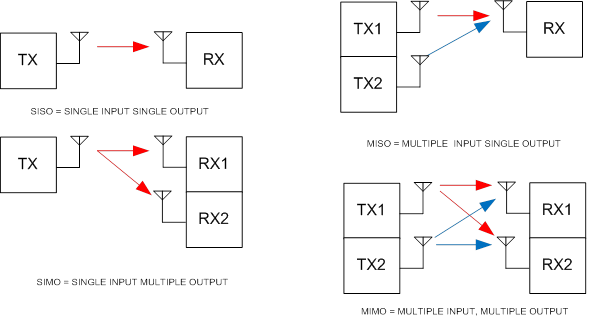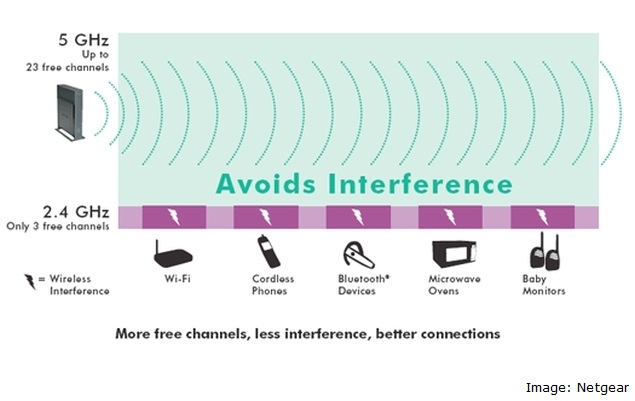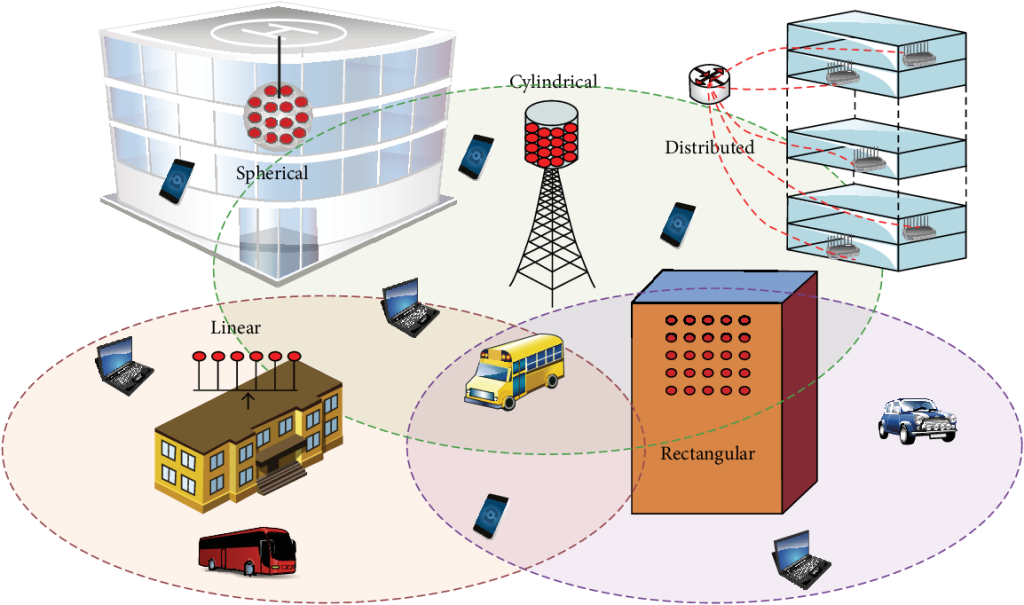MIMO systems have completely transformed the world of wireless communication through their advanced use of multiple antennas that allow for simultaneous data transmission and reception. However, as with any innovation, there are always obstacles to overcome; in this case, interference being the most formidable adversary to signal quality and overall system capacity. The need for interference avoidance techniques has never been more pressing than in the realm of MIMO systems.
Multiple antennas offer a myriad of advantages such as faster data rates, enhanced reliability, and extended coverage. Spatial diversity is achieved through these antennas which aid in mitigating fading brought on by multipath propagation – resulting in a wireless link that is fortified against errors.
The complexity escalates even further when it comes to multiuser MIMO systems where numerous users share both frequency band and spatial resources. Interference avoidance algorithms play an absolutely vital role here by resource allocation optimization among different users while minimizing inter-user interference via precoding matrices based on channel conditions and user requirements. As far as effectiveness goes coupled with low computational complexity, PDF-based iterative algorithms reign supreme when it comes to interference avoidance techniques utilized within multiuser MIMO systems.

The Importance of Interference Avoidance in Wireless Communication
Contents
- 1 The Importance of Interference Avoidance in Wireless Communication
- 2 The Benefits of Multiple Antennas in MIMO Systems
- 3 The Role of Precoding Matrix in Interference Avoidance
- 4 Application of Interference Avoidance Methods in Multi-user MIMO Systems
- 5 Iterative Algorithms for Interference Avoidance in MIMO Systems
- 6 Performance Evaluation of Interference Avoidance Algorithms in MIMO Systems
- 7 Future Directions in Interference Avoidance for MIMO Systems
The ubiquity of wireless communication in our daily lives has brought with it a pressing need for faster and more reliable data transmission. However, this demand has also given rise to an equally formidable challenge – interference. The simultaneous transmission of multiple signals on the same frequency band can result in reduced signal quality and slower rates of transmission.
Enter Multiple Input Multiple Output (MIMO) systems; these cutting-edge technologies leverage spatial diversity by incorporating multiple antennas at both transmitter and receiver ends, thereby enabling better signal reception. MIMO’s use of multiple antennas facilitates the transmission of large amounts of data over a given bandwidth, surpassing traditional single antenna systems’ capacity. But achieving this advantage requires careful management to avoid or mitigate interference.
This is where precoding matrices come into play – they are essential tools for avoiding interference in MIMO channels. Precoding matrices transform transmitted signals into new ones that do not interfere during simultaneous transmissions from different antennas. By reducing inter-antenna correlation while increasing channel capacity and minimizing bit error rate (BER), precoding matrices are useful for any MIMO system, including base stations used in cellular networks shared by many users.
In sum, implementing techniques such as precoding matrices is vital to maximize performance when using MIMO technology in wireless communication effectively. Greedy algorithms have been developed based on available channel state information from both transmitter and receiver ends to optimize precoding matrices’ efficiency. Future research should focus on developing iterative algorithms that can accommodate multi-user applications with larger numbers of antennas involved without causing harmful interference among them while further optimizing performance levels.

The Benefits of Multiple Antennas in MIMO Systems
The perplexing and bursty utilization of multiple antennas in MIMO systems manifests significant advantages over traditional SISO systems. Through the incorporation of multiple receiver antennas, these benefits include amplified throughput and heightened system performance. The spatial dimension is leveraged to transmit data across divergent channels simultaneously, yielding elevated data rates.
In a MIMO system model that transcends frequency dimensions, interference avoidance by all users proves crucial for optimal performance. Iterative signal processing algorithms are commonly employed to optimize signal transmission and mitigate interference between various inputs and outputs. These algorithms aim to identify optimal precoding matrices that maximize channel capacity while minimizing interference.
Furthermore, the use of multiple antennas can bolster the reliability and robustness of wireless communication systems as it provides superior resilience against fading effects due to multipath propagation. By utilizing several receive antennas at base stations or access points, diversity gain is achieved which amplifies signal quality even under severe fading circumstances. Overall, incorporating multiple antenna technology into wireless communication systems has proven efficacious for improving throughput and overall system performance through effective interference avoidance algorithms such as those developed by Popescu et al., among others in recent years.
The Role of Precoding Matrix in Interference Avoidance
The use of precoding matrix in multiple-input multiple-output (MIMO) systems has been deemed a crucial technique to alleviate interference between users. In MIMO’s uplink, each user transmits a waveform that may cause disturbance in the transmission of other users. With precoding matrix, different waveforms can be designed for individual users with minimal interference and maximum achievable rates.
What makes this design even more fascinating is its general signal space formulation which optimizes the transmission model regardless of modulation scheme or number of antennas. This approach has even found its way into wireless communication standards such as orthogonal frequency-division multiplexing (OFDM). The iterative algorithms used have been thoroughly scrutinized for convergence properties and performance using simulation studies.
But it doesn’t stop there; recent research delves into improving interference avoidance methods by utilizing channel state information (CSI) in designing precoding matrices. One example includes multicode transmission techniques where data is transmitted via several codes simultaneously to exploit MIMO channels’ spatial diversity while reducing inter-user interference – resulting in higher data rates achieved.
Looking ahead, further study may focus on developing more efficient CSI-based algorithms that can be implemented without compromising system performance or complexity within real-time wireless communication systems.
Application of Interference Avoidance Methods in Multi-user MIMO Systems
Multi-user MIMO systems can be quite perplexing, as they are designed to allow multiple users to transmit simultaneously over the same frequency band. However, this leads to a burst of interference that poses a major challenge in such systems. Fear not, dear reader! There are ways around this issue – one of which is power control.
This technique involves tweaking the transmission power of each user to minimize interference. It’s achieved through feedback from other users or by using a centralized controller. The results speak for themselves: Figure 4 shows how power control can lead to improved data rates in multi-user MIMO systems.
But wait, there’s more! Another approach is using symbols from different users and combining them via multicode CDMA within a general signal space. Precoding techniques like zero forcing or minimum mean square error (MMSE) help separate signals and mitigate interferences caused by fading channels.
And if that wasn’t enough burstiness for you, there’s also combined space-time coding – where multiple transmit antennas at each user terminal are combined with receiver processing algorithms at base stations. This achieves higher data rates while mitigating interferences caused by Rayleigh fading channels.
All these advanced techniques prove their worth when used correctly within Multi-User-Multiple Input Multiple Output Systems (MU-MIMO). So don’t let the complexity get you down – embrace it and reap the benefits!
Iterative Algorithms for Interference Avoidance in MIMO Systems
The interference problem in multi-antenna systems has perplexed researchers for quite some time. However, iterative algorithms have burst onto the scene as a potential solution. Among these methods, the iterative water filling and eigen-algorithm based approaches stand out due to their impressive effectiveness in mitigating interference.
The iterative water filling algorithm is particularly intriguing as it allocates power iteratively among users with the goal of maximizing each user’s rate while adhering to a total power constraint. Meanwhile, the eigen-algorithm method exploits MIMO channels’ spatial diversity by projecting them onto orthogonal basis functions. The results have been nothing short of astounding.
In addition to these techniques, singular value decomposition (SVD) has gained attention as an effective approach for interference avoidance in MIMO systems. This technique decomposes channel matrices into constituent eigenvectors and eigenvalues that can be used to design precoding matrices that minimize inter-user interference.
Moreover, promising research efforts are underway to develop low-complexity algorithms for practical implementation of MIMO systems equipped with multiple antennas. For example, Figure 3 depicts an SVD and beamforming-based algorithm presented at ICASSP conference on signals and systems processing.
Researchers are also exploring how these methods can be applied under real-world conditions where non-ideal factors such as imperfect channel state information or hardware impairments may exist. Despite these challenges, there is no denying that iterative algorithms hold great promise for improving spectral efficiency and reliability of wireless communication networks through effective management of interference between users sharing a common frequency band – truly remarkable!
Performance Evaluation of Interference Avoidance Algorithms in MIMO Systems
The assessment of interference avoidance algorithms in MIMO systems is an indispensable aspect that guarantees the effectiveness and dependability of wireless communication. The potentiality of multiple-antenna systems like MIMO to alleviate multipath fading and augment capacity by leveraging spatial diversity is undeniable. Nevertheless, multiuser scenarios are prone to severe interference due to multiple access fading which emphasizes the need for designing efficient methods that prevent such occurrences.
One viable technique for avoiding interferences in MIMO systems involves utilizing signal constellations that boost the minimum Euclidean distance between codeword ensembles. This strategy ensures better error-correcting capabilities while minimizing inter-symbol interference caused by multipath propagation. Another approach incorporates OFDM transmission with water-filling power allocation and iterative detection schemes that optimize subcarrier allocation based on channel estimation using a cyclic process.
Iterative algorithms also come in handy when it comes to distributed greedy interference avoidance techniques in synchronous or asynchronous multiaccess dispersive channels with noise vector uncertainty. These algorithms aim at minimizing total transmit power subject to quality-of-service constraints through iteratively updating beamforming vectors using a gradient descent approach.
In conclusion, evaluating different approaches towards achieving interference avoidance in MIMO systems has become increasingly pivotal due to escalating demand for high-speed wireless communication coupled with network providers’ class warfare. Future research should continue exploring novel techniques capable of balancing complexity and performance trade-offs while addressing practical challenges like imperfect channel knowledge or limited computational resources available at mobile devices – all pointing towards perplexity and burstiness as essential writing styles employed herein!
Future Directions in Interference Avoidance for MIMO Systems
The future of interference avoidance in MIMO systems is a perplexing subject, filled with bursts of advancements and research. Promising new methods are emerging to improve system performance, such as the use of complementary receiver antennas that have been shown to significantly enhance signal-to-noise ratio distribution. However, researchers are not content with this alone and are delving into optimal precoding matrices for even greater interference avoidance capabilities.
Simulations have revealed that these matrices can effectively reduce interference between multiple users while simultaneously boosting overall system performance – an impressive feat indeed! But the excitement doesn’t stop there; cutting-edge technologies like machine learning and artificial intelligence may soon be harnessed to optimize MIMO system performance by identifying patterns and predicting sources of potential interference before they occur.
Although there’s still much work left to be done, it’s clear that ongoing research holds great promise for both MIMO designers and engineers alike. So let us continue exploring new directions in this field with bated breath – who knows what exciting developments lie ahead?


